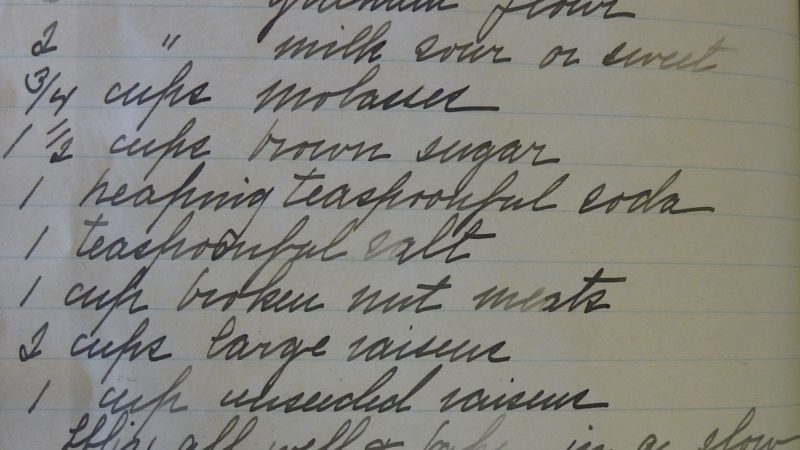
The Rhode Island Historical Society’s theme for 2017 is Relishing Rhode Island. To celebrate this, our staff will be cooking recipes found in our collections. Some recipes will be paired with collection items to help tell the stories of the author/compiler, while others will come straight out of cookbooks from our printed collection or miscellaneous recipes found in the manuscripts collection.
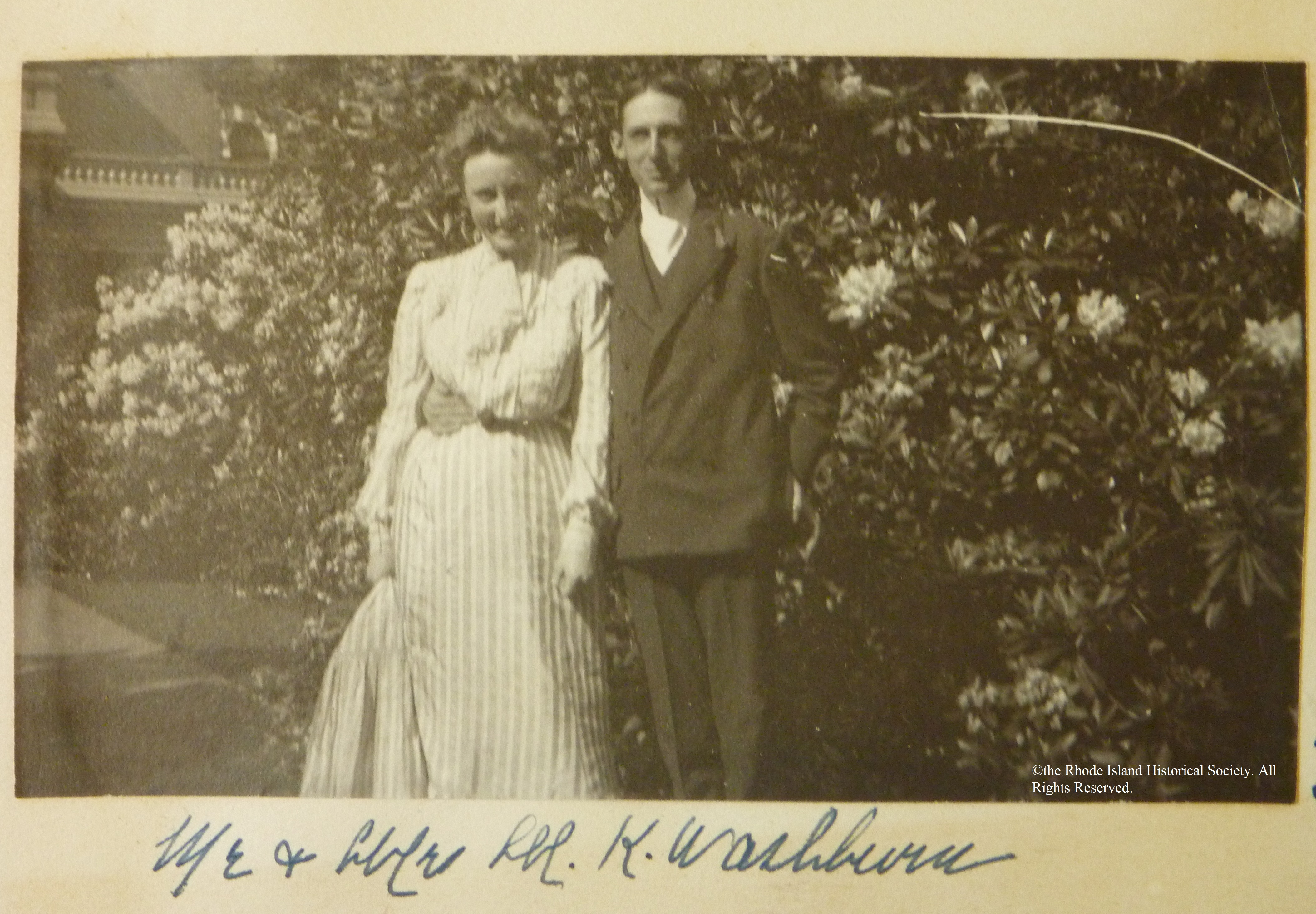
Mrs. Washburn’s recipes and even a few housekeeping tips date from 1898 through 1931. There are magazine clippings tucked into pages while others are handwritten by Washburn on the pages of the volume or glued in. Like many recipe collections of this time, there are numerous preserves, jams, and pickle recipes. Other recipes include fish chowder, dandelion or rhubarb wine, brandied peaches, and cakes.
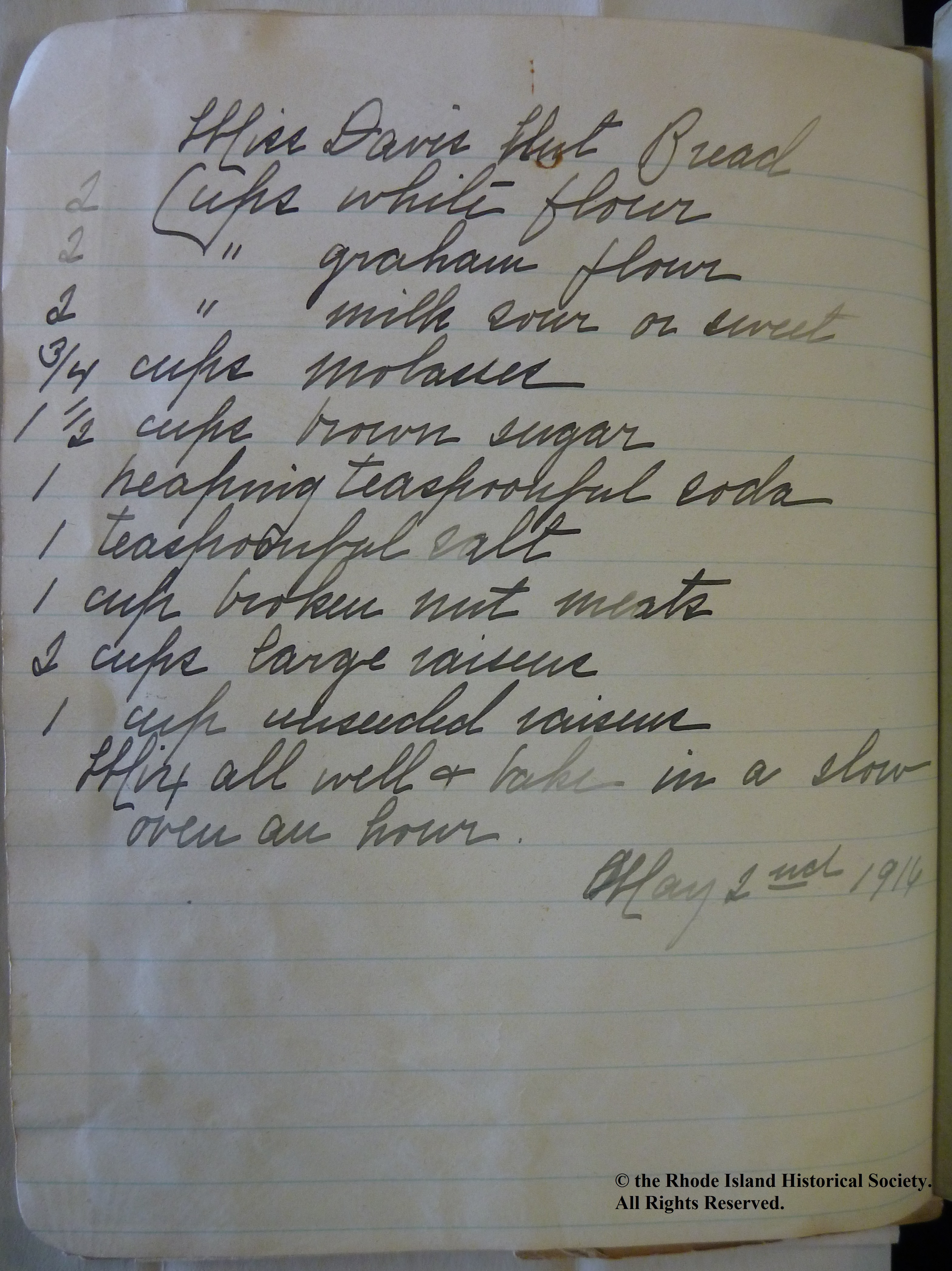
A few ingredients on this recipe immediately gave me pause: graham flour, sweet milk, and unseeded raisins. Graham flour was easy to define, but not as easy to source. Named after Sylvester Graham (1794-1851), this flour is a course ground, whole wheat flour that is not sifted. After much searching in the grocery store and my small, local health food store, I decided to settle on stone ground whole wheat flour. Sweet milk is just non-soured milk, and given the time period, the original recipe would have used whole milk. This recipe called for the use of either sweet or sour milk. Sour milk was often used in baking so it was not wasted.
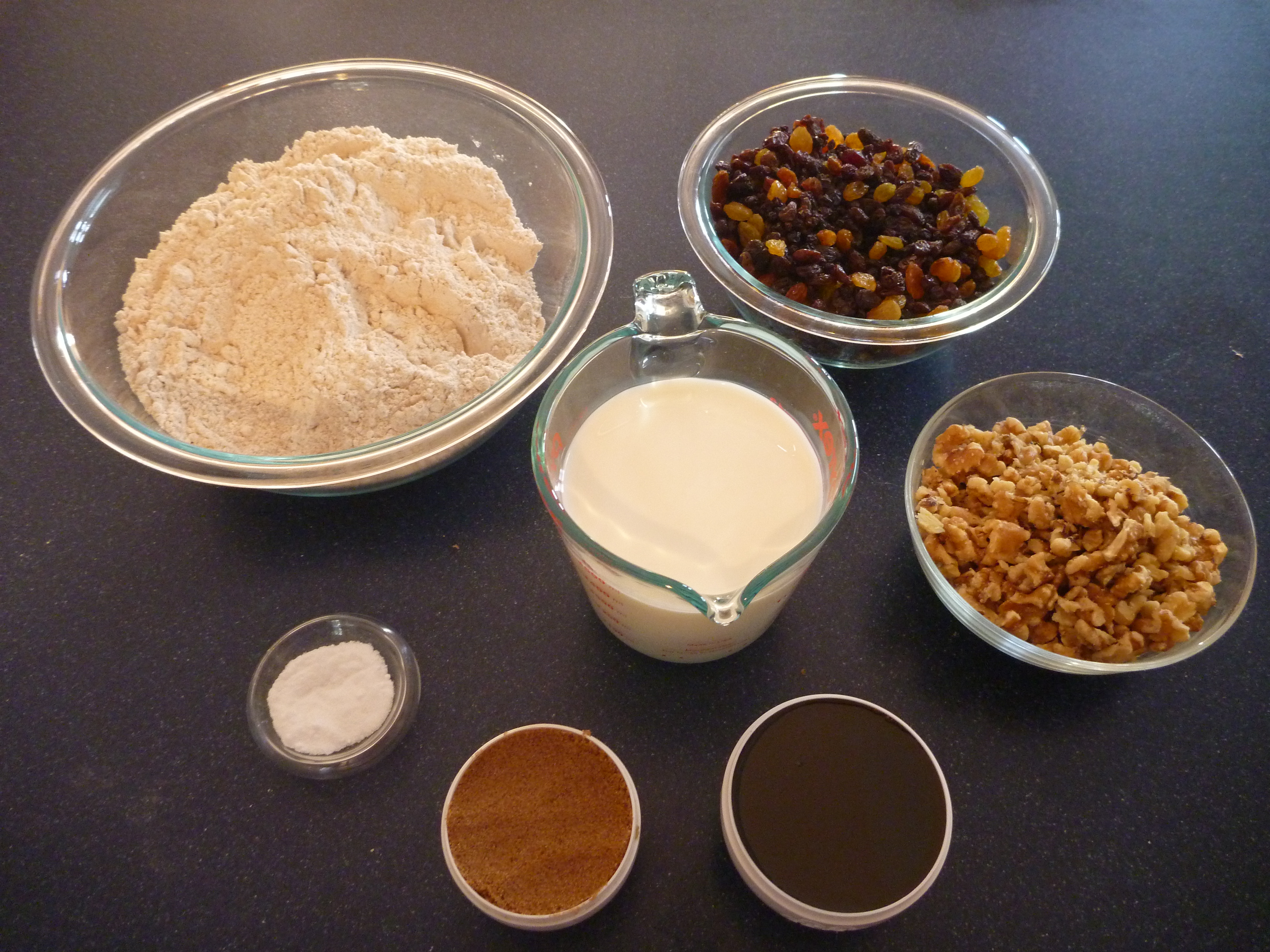 Finally, it was clear to me that raisins are no longer sold with seeds! I decided that like my grandmother and great-grandmother, I would just have to do with the ingredients on hand and not fuss over the details too much. I chose to use a mixture of golden raisins, organic raisins, and currants to make up the three cups required for this recipe.
Finally, it was clear to me that raisins are no longer sold with seeds! I decided that like my grandmother and great-grandmother, I would just have to do with the ingredients on hand and not fuss over the details too much. I chose to use a mixture of golden raisins, organic raisins, and currants to make up the three cups required for this recipe.The recipe came together very nicely and was enough for two standard loaf pans. The baking instructions “bake in a slow oven an hour” left a little flexibility in the temperature setting. A “slow oven” is a lower temperature oven, though the definitions available vary dramatically (225 F – 325 F). I set my oven at 275 F and checked on the baking after about 40 minutes and I did leave the pans in for the full hour before taking them out to cool on a rack.
I brought the final result to the library to share with my coworkers. It was a nice snack for morning tea or an afternoon pick-me-up.
Stay tuned for future cooking adventures from the stacks!
~Michelle Chiles, MLIS, Research Center Coordinator
Additional Resources:
Echoes from the Vault, St. Andrews Special Collections
Historical Cooking Blogs:
The Historical Cooking Project
Four Pounds Flour, Historic Gastronomy by Sarah Lohman
Cooking in the Archives, Updating Early Modern Recipes (1600-1800) in a Modern Kitchen
The Recipes Project
Savoring the Past
Measurements, Conversions, and Definitions:
Culinary Dictionary
Old and Interesting: Kitchen Antiques
The Historic American Cookbook Project
Homemade Dessert Recipes

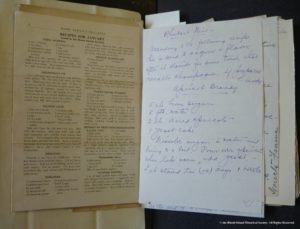
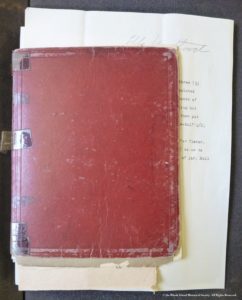
That looks like such a typical war cake. The Graham flour clued me in to the WWI time period when flour was rationed (voluntarily). “Save the wheat.” I made oatmeal muffins from the Dorothea Bushnell papers for my exhibit “Rhode Islanders, Food and the World Wars” http://rifoodwars.tumblr.com/post/55104400526/during-world-war-i-cooks-had-to-get-creative-with
She had a bunch of other recipes you might want to check out. Don’t forget to use Rumford baking powder, made right here in RI until the company was sold in the latter half of the 20th century.
Michelle, how did it taste? (Too sweet, not sweet enough…?)
Did it rise? The photo looks like the middle did, the ends not so much.
How would you change the recipe if you were to make it again? (325 oven for less time? More or less sugar, different flour?
This is so interesting, I’d love to hear more.
Thank you for asking about the bread. The bread was not too sweet – very much like a raisin bran muffin. It was definitely a dense bread. I liked the whole grain flour, but some people may prefer a lighter flour mixture. In recipes that I am more familiar with I usually swap out some sugar and a bit of liquid with unsweetened applesauce, but I would need to know this bread a bit more before I played around too much. If I were to make it again I would add cinnamon or some other spices, but that’s just me!
I see you don’t monetize your blog, don’t waste
your traffic, you can earn additional bucks every month because you’ve got
high quality content. If you want to know how to make extra money, search
for: Mertiso’s tips best adsense alternative
I have checked your blog and i have found some duplicate content, that’s why you
don’t rank high in google’s search results, but there is a tool that can help you to create 100% unique content,
search for; Boorfe’s tips unlimited content